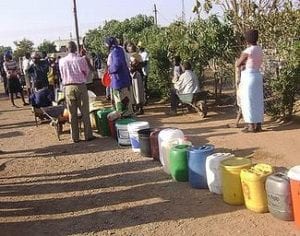As predicted in our newsletter last week the banning of bulk water abstractions in Harare’s residential areas has not been well-received by residents. The Zimbabwe National Water Authority (ZINWA) has bombarded with enquiries regarding the rationale behind the plan.
One of the more contentious issues surrounds why ZINWA is now charging $3 per m3 for 1 000 litres of water that bulk water sellers are supposed to collect at the designated points of collection. Daringly – considering the rigid regime – people have openly questioned what the money will be used for. Obligingly the ZINWA Corporate Communications and Marketing Department issued a statement to allay the reservations of many stating:“People need to know that the $3 figure is broken down into three components where ZINWA, the Ministry of Environment, Water and Climate and respective sub-catchment councils get $1 apiece. The $3 prices remains highly affordable taking into account that bulk water sellers were making a huge profit selling the water abstracted from Harare boreholes at a cost of $10 per m3 with households having to pay $50 for 5 000 litres of water. This price was already on the high side taking into account that in other jurisdictions trucked water prices, though market driven, are around $6 per m3. It would therefore be unjustified for the bulk water sellers to then increase their water price under the circumstances. The money which ZINWA will get from these bulk water sales would go towards the cost of maintaining and managing the boreholes in question as well as developing new bulk water sites. ZINWA is also mandated to monitor groundwater use, availability and quality in terms of the law. The revenue raised from the water sales will also be invested towards the execution of these duties. Money due to the Ministry of Environment, Water and Climate will go towards the Water Fund. Section 39 of the ZINWA Act, establishes the Water Fund, which is administered by the Minister as a trustee of the fund. All money collected under the Water Fund shall be used for the development of the water resources of Zimbabwe.”








